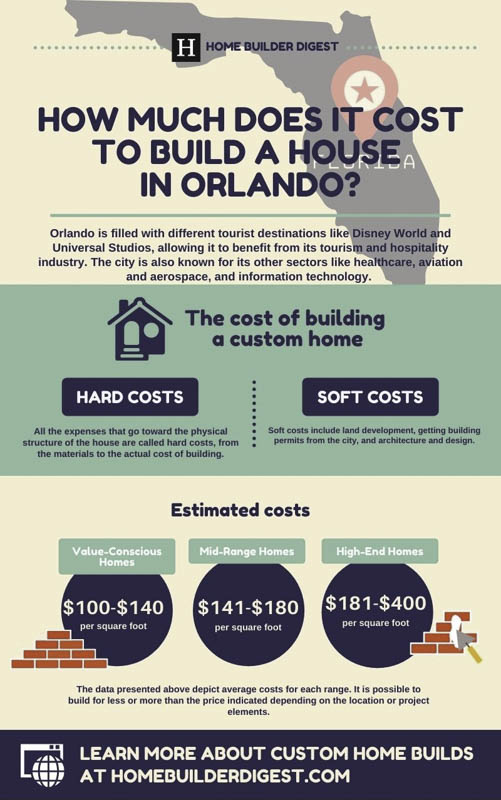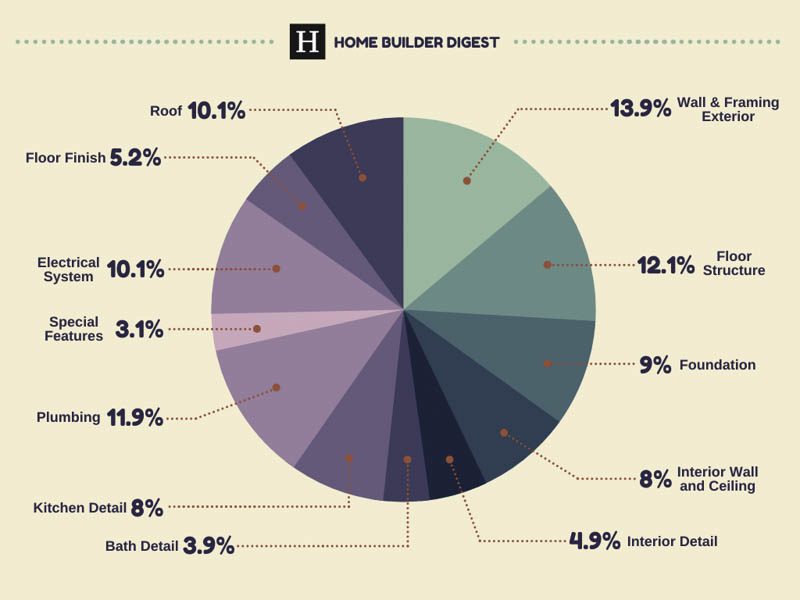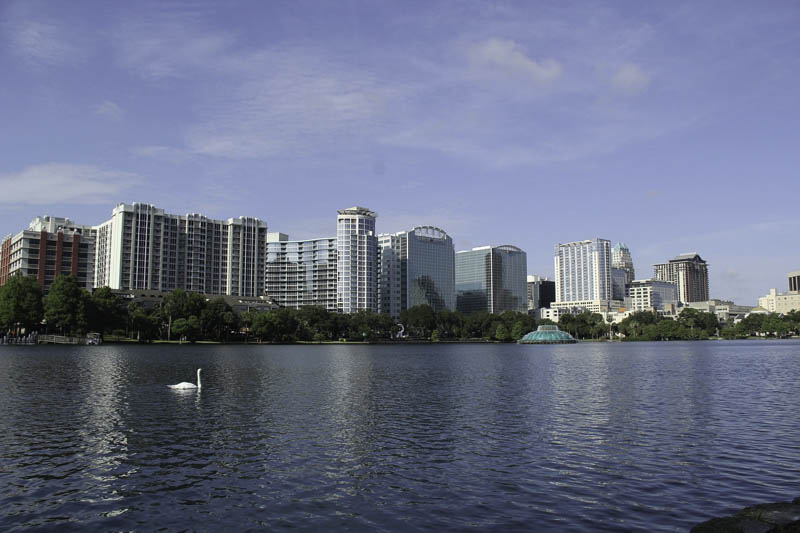Home » Cost Guides » Florida Cost Guides » How Much Does it Cost to Build a House in Orlando?
Orlando is filled with different tourist destinations like Disney World and Universal Studios, allowing it to benefit from its tourism and hospitality industry. The city is also known for its other sectors like healthcare, aviation and aerospace, and information technology. While the COVID-19 pandemic has certainly affected Orlando’s economy, market experts are confident in its resiliency.

The Cost of Building a Home in Orlando

The population growth is causing Orlando’s real estate market to perform well despite the move to online buying. Reports have shown that the housing inventory is 47% lower than in December 2020. Real estate experts are also stating that there are not enough homes to meet the growing demand, which follows the national trend of the demand for homes exceeding supply.
Orlando, alongside the Central Florida region, is expected to experience an upwards trend for 2022, according to economic insights. Currently, the city is undergoing positive growth for its population and retail and industrial sectors.
Fortunately for the construction industry, the diminishing supply of homes provides an opportunity to work on projects. The lack of supply is also increasing home prices, which will push prospective homeowners to build their own homes instead of waiting for a home to become available at a much higher price.

Figure 1. Typical cost breakdown of a single-family home constructed using the conventional method, according to Home Builder Digest. Image Source: National Cost Guide.
The national average of new home construction costs $100 to $155 per square foot, while Wichita’s new home construction cost range is generally $100 to $220 per square foot. Construction pricing is based on type and quality. A basic home would cost differently from a mid-value or a high-end home so prospective homeowners need to be aware of where their plans fall under. There are also hard and soft costs to consider.
The physical aspects of home construction like labor, framing, foundation, plumbing, roofing, and flooring all fall under hard costs. Meanwhile, land, architecture and design, permits, and additional features are soft costs. Hard and soft costs will fluctuate independently of one another.
Hard Costs
Get a free cost estimate
Prospective homeowners can expect new home construction projects to cost $320,000 on average. A standard grade new home construction project costs $100 to $140 per square foot, however, it should be noted that finding firms that work in this range may be difficult. It is more common to see services offered in the middling range of about $141 to $180 per square foot, which is typically for a premium-grade new home construction project. For a higher-end or luxury grade new home construction project, pricing is generally $181 to $200 per square foot. There are also some cases where the cost can reach $400 per square foot.
The construction cost range will vary depending on several factors, including finishes, custom features, and location. Additionally, it does take into account the cost of the foundation, roofing, HVAC installation, electrical, labor, and other hard costs.
Roofing costs differ depending on the type of roof. The table below shows the pricing range prospective homeowners can expect:

Foundation costs in Orlando range between $5.65 to $6.29 per square foot for a 4-inch reinforced slab on grade. Electrical costs are around $78.64 to $87.49 per hour, plus materials and parts. HVAC installation will be around $4,410 to $12,370, plus an additional $50 to $90 per hour. Piping costs are $1,500 to $15,000.
Soft Costs
Get a free cost estimate
Soft costs are related to land, permits, and design. These costs are the non-physical aspects of new home construction projects.

Figure 2. Soft cost percentage and average price range of additional fees, determined from the overall cost of custom home building in Orlando.
Cost of the Land
Currently, Orlando is experiencing positive population growth. The increase in population will likely lead to an increase in land prices, with some areas costing more or less than others depending on location and available amenities.
Lots available on Zillow have an average cost of $224,793.27 and an average lot size of 10,338.19 square feet. The available lot sizes vary between 6,534 and 18,295 square feet. One of the cheaper Orlando lots posted on Zillow is located on Takoma Street and costs $55,000 for 12,632 square feet. Meanwhile, the most expensive Orlando lot available on Zillow costs $695,000 for 18,295 square feet. The lot is located in Cordova Drive.
Lots posted on Redfin are differently priced compared to Zillow. The cheapest available lot is $20,000 for 6,750 square feet, located on Amazon Street. The most expensive lot, on the other hand, is $8,900,000 for roughly 2,674,148.4 square feet. It is a lakefront lot located along Moss Park Road.
Permits and Other Fees
All building permits within Orlando can be applied for through the local government website. Appointments for permit consultation, processing, or application can also be scheduled online, which the local government encourages.
The total permitting costs will depend on project details like square footage, the number of floors, permit type, and overall project valuation. The following table features permit costs from Orlando’s fee schedule:
Architecture and Design Fees
Architectural fees are typically dependent on the total construction costs. Orlando architects will generally charge anywhere from 7.13 to 11.33% for different services and project complexity.
Architects can also choose to charge by the hour, with the pricing commonly ranging from $101.67 to $216.67, plus materials. The cost will adjust depending on the work request, project location, and the architect’s position, experience, training, and reputation.
Some architects may offer to price based on square footage, which generally ranges between $8 to $14.33 per square foot for design services. Prospective homeowners can avail of services like layer drawings, project management, concept development, consultation, and site visits.
What Leading Custom Home Builders and Architects that Serve the Orlando Area Say
Get a free cost estimate
Orlando-based firm Nasrallah Architectural Group shared that the typical pricing range for architectural services in Orlando is 4 to 7% of total construction cost. The firm suggests clients be patient with today’s market and pricing due to several factors that result in fluctuation. Some of these factors are supply and manufacturing, delivery issues, massive family relocation, labor shortage, and lack of skilled labor.
Adam Vellequette, Principal at KBF Design Gallery, provided information on the remodeling side of the residential construction industry. The cost per square foot to remodel depends on which part of the home will undergo renovation. For remodeling an entire home, most of the cost per square foot will be dedicated to the kitchen and bathrooms. The reason is that remodeling kitchens and bathrooms are more expensive than remodeling other rooms like bedrooms, living rooms, or dining rooms.
High-end remodeling projects for kitchens or master bathrooms are typically around $350 per square foot, but there are different factors affecting the price. The cost will change depending on what the decisions for countertops, backsplash tile, sinks, faucets, and range-hoods among others will be.
“The best way to determine what your cost will be is to show photos of your current space to a professional designer, along with photos of your desired result, letting them know what is most important to you,” said Vellequette. If a homeowner is set on certain features, designers should be able to suggest ways to save money on other design elements.

According to KBF Design Gallery, both residential construction and remodeling are booming in 2022 with no expected slowdowns. Rising property values, low-interest rates, and work-from-home arrangements have resulted in an environment where people are either seeking new homes or enlarging or upgrading their existing homes. The industry is currently having difficulty meeting demand.
“Recessions notwithstanding, our costs have gone up every single year since I can remember,” Vellequette said. Some of the major contributors to cost increases are a lack of skilled labor and increases in product and material price.
Homeowners are advised to work sooner rather than later. Vellequette said, “A significant portion of the value in a remodel is the time you get to spend enjoying it. The sooner you capitalize on the opportunity to remodel your home, the more return you will see on your investment, both financially and emotionally.”
The Future of Orlando’s Residential Construction Industry

Get a free cost estimate
Market experts have noted more work opportunities in Orlando based on a recent national survey. About 74% of the 1000 national construction firms have reported having enough projects and requiring more employees while 27% say that they plan on increasing their labor force.
Most contractors have a positive outlook for the construction industry, considering the rising demand for new homes. The move towards building single-family homes comes as a relief for the construction industry following the economic slowdown from 2020. Market experts are attributing this shift to millennials reaching the homebuying age.
Unfortunately, 75% of the surveyed 1000 firms have also stated that supply-chain issues and rising material prices have resulted in the cancellation or postponement of projects in 2021. The supply chain issues do not seem to be easing up in the short term.
Labor Shortage
According to Home Builders Institute (HBI) CEO, Ed Brady, easing the severe worker shortage and construction delays will require the industry to make crucial changes. The troubling lack of labor is described as a “long-term structural crisis” that should be addressed with “increased training, compensation, diversity, and productivity.”
HBI’s Construction Labor Market Report shows that the industry needs about 2.2 million new workers within three years to meet America’s housing demand. Brady suggests the industry recruit more women, train more minority, lower-income, and second-chance youths and adults, and provide trade skills education and training to veterans and transitioning military among others.
Part of HBI’s plan to bring more laborers into the workforce is creating a nationwide network of home building academies for anyone who is 18 years or older to receive construction trades training. An Orlando branch opened in 2021; New Orleans, Houston, Phoenix, Sacramento, and Charlotte are expected to have their academies in 2022.
Students in middle and high schools are also given the opportunity to undergo HBI’s industry-recognized Pre-Apprenticeship Certification Training (PACT) curriculum.
Considering building a home in Orlando?
Contact us for a free consultation

